How Karyn Easton Captures Mesmerizing Photos of Oil and Water
For more stories like this, subscribe to The Phoblographer.
“The real inspiration for the series came from the very simple idea that something beautiful could be created with household materials that typically do not mix,” the photographer Karyn Easton tells me. Featuring oil bubbles floating in a water dish, her ongoing series of macro abstracts highlights the tiny miracles that happen every day when two seemingly mundane liquids collide and repel. Even when she found herself homebound amid lockdowns, she discovered this basic concoction–a familiar favorite in childhood science experiments–provided hours of delight and fascination.
Want to get your work featured? Here’s how to do it!
During the last year, Easton’s oil and water series also took on fresh layers of meaning and significance in the artists’ eyes. “When I created my bubble series, I noticed how much conflict was going on in the world with both wars and a pandemic,” she admits. “My bubbles represented my thoughts on everyone setting aside differences. Even the most unlikely of unions (e.g. water repelling oil) could be made into a thing of beauty. It was a metaphor for the larger world around me: a glimpse into the microcosm that hopefully could be reflected into the macrocosm and, ultimately, a more unified world.” Below, she tells us more about the project.

The Essential Gear of Karyn Easton
Easton tells us:
“When shooting my macro oil on water bubbles, my go-to gear includes a Nikon D750 Digital Camera, a Sigma 105mm 1:2.8 DG Macro HSM, and a Manfrotto MKCOMPACTACN-RD Tripod with a button for quick camera release. I also use a variety of household torches (various makes) as my light source. Other than that, the setup is actually very simple, and no flash is needed.”
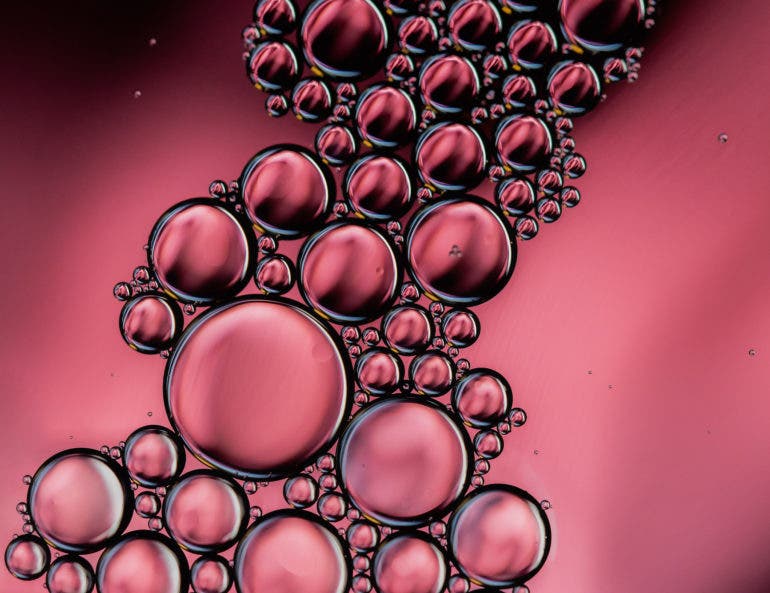
Phoblographer: Tell us about how you first got into photography.
Karyn Easton: If I’m honest, I first fell into photography more by chance than design. I’m really glad that I did, though, because many years ago when I studied the craft, I learned from the ground up. This started with learning how to develop my own black and white and color 35mm, 2.5-inch square, and 10×8 inch films. Not only did I have the privilege of learning analog photography, but it left me with the kind of skills needed to easily transition into the digital world of image-making.

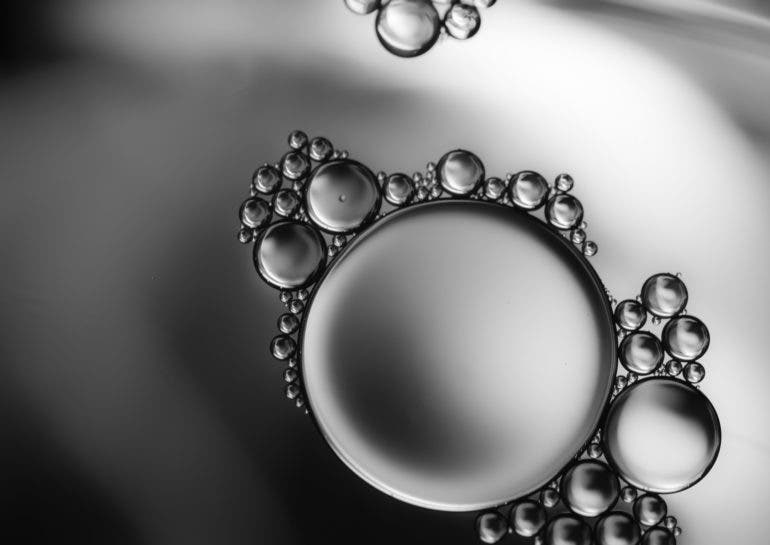
Phoblographer: What made you want to do special macro-style work like this?
Karyn Easton: Macro photography has always fascinated me. It’s almost like a hidden, unseen world that is all around us but often neglected. For example, who would have thought that spiders could have such cute faces? Yet when some of them are photographed very close up, they do indeed look quite friendly. I love uncovering the beauty in the unseen, hence my handle: “The Secret Shutter.” The macro world is full of visual delights, and this is what really inspires me.
I was first drawn to the world of abstract macro photography when I encountered some beautifully photographed insects on Instagram. Flies and bugs were not something that I had given much thought to in my life before. However, seen through a macro lens, I could appreciate how incredibly well-engineered and beautiful these creatures actually are. It was like a light bulb moment for me, and from that time onwards, I was completely hooked on everything tiny.


Phoblographer: Why is it important for you, as a commercial photographer, to experiment with new techniques in your personal work?
Karyn Easton: In the days of analog photography, I suspect that it would have been much easier to earn a living as a photographer. I say this because the whole process of photography and image-making was not only a highly skilled undertaking at that time but also very costly. Today, with the advent of digital photography, pretty much everyone has access to a relatively cheap and easy way of image-making.
Today, there’s no requirement for messy chemicals, expensive photographic papers, darkrooms, and condensers, etc. In fact, most smartphones these days incorporate point and press digital cameras. Therefore, lots of people are free to explore their photographic creativity. More creative photographers in the field mean more competition, so it is vital to keep experimenting and learning new techniques if you want to stay ahead of the game.
It is also very enjoyable keeping abreast of new techniques. I believe the beauty of digital photography lies in the ease of creating, exploring, and experimenting. Exploration in the area of macro photography has helped me to grow as a photographer because it forces the complete understanding of many key photographic concepts: focus, ISO, depth of field, lighting, aperture, and shutter speed. In my view, macro photography is one of the most challenging forms of photography and an ideal place to start if you really want to start exploring your camera.
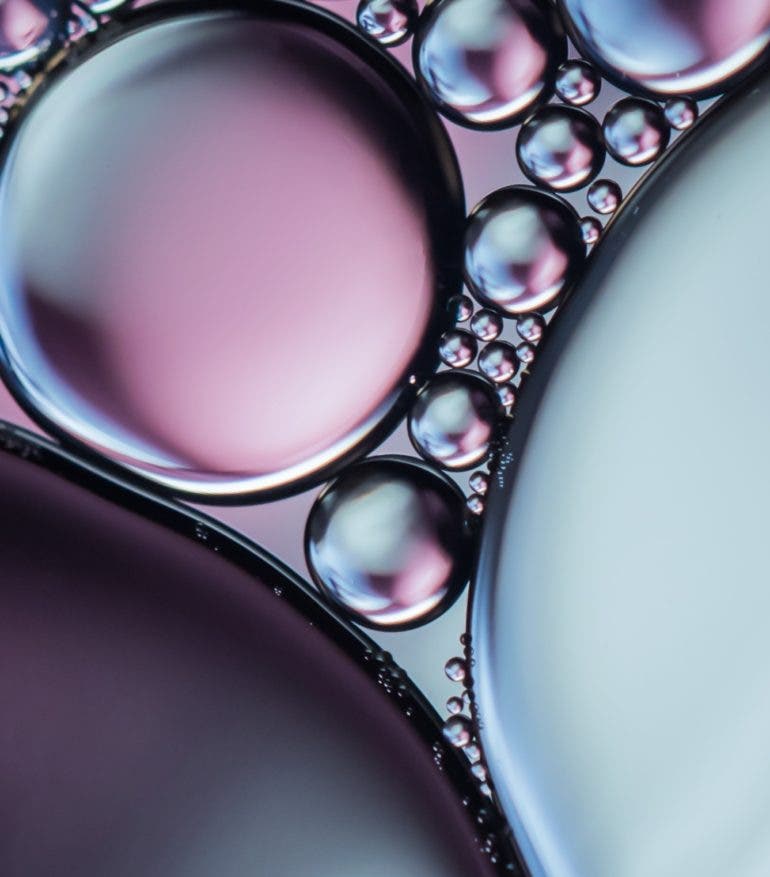
Phoblographer: What are some of the biggest technical challenges that come with shooting these abstract macros with oil and water?
Karyn Easton: There are a number of technical challenges when shooting my oil on water bubbles. The first is ensuring that your camera is perfectly aligned to the subject. If the camera angle is only slightly off, then only parts of the image will be in focus.
The next big challenge is lighting. Flash cannot be used, as it results in unsightly flare, so continuous light is required. Often, continuous lighting results in very low light shooting conditions, which then has the knock-on effect of requiring a large aperture and a relatively slow shutter speed. An ISO that is too high just gives an over-grainy effect, so that is yet another consideration. Together, these things create a perfect storm, especially where macro photography is concerned.
I have found that the only way to overcome these challenges is to shoot many images and experiment with lighting as much as possible. My macro bubbles take hours to create and perfect, and for each image created, I have been known to discard over 100 images that were ever-so-slightly out of focus. Focus stacking is also not an option because the bubbles are constantly moving. Patience is the watchword for me–patience and a determination to produce something beautiful at the end of it all.


Phoblographer: Do you experiment with the ratio of ingredients?
Karyn Easton: Over the period of time I have worked with oil on water, I have experimented extensively with different ratios of oil to water. I have found that it helps to start with only one large bubble, carefully poured onto the water from a tablespoon, and move to divide the large bubble from there. What I have found doesn’t work well is when the bubbles are mixed together and tiny bubbles form. For some reason, this does not seem to work well visually, and the water just turns murky. Soap bubbles make a great alternative to oil on water, as they do tend to stay a little more stable for longer.
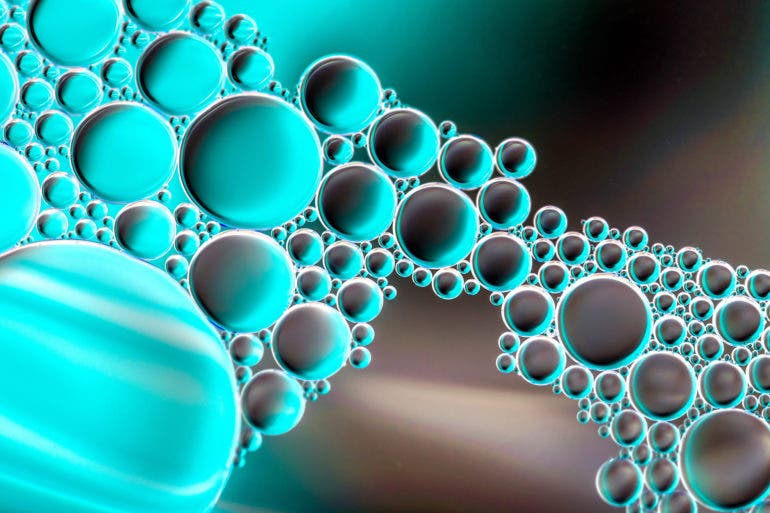
Phoblographer: What inspired your color palette for this series? How much of it was tweaked in post-production?
Karyn Easton: My inspiration for this series was always drawn from complementary colors on the color wheel, my philosophy being that opposites attract. For example, greens and reds, yellows and purples, and blues and oranges. I thoroughly enjoy the post-production part of my bubble image-making, as I find it therapeutic. Most of the edits are very light edits using the spot healing tool in Photoshop. It is a simple, repetitive job cleaning up any little impurities or debris that appear in the bubbles.


Phoblographer: What do you look for when creating these colorful abstract compositions? How much control do you have over the size and appearance of the bubbles themselves?
Karyn Easton: When I create my abstract bubbles, it is extremely important to me to ensure all of the bubbles are in focus as much as possible. The colors used in my images are largely down to me and the choices I make. However, the size and appearance of the bubbles are much less easy to control. The oil bubbles that are created when oil is added to water are seldom ever close to static. Even if their movements are small, they are always moving. More importantly, they often bump into each other, creating even larger bubbles! The trick is speed and precision during the shooting process. If you turn your back for one second, your composition has often changed.
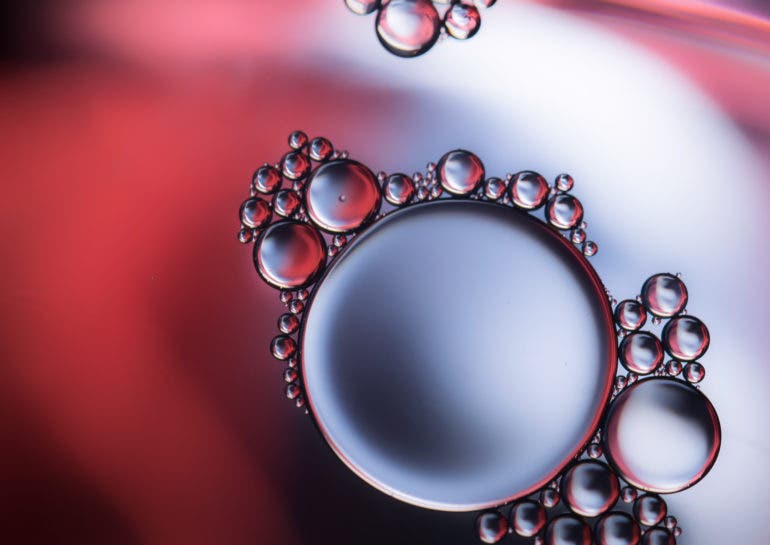

All photos by Karyn Easton. Used with permission. For more work by Easton, visit her website, The Secret Shutter. You can follow her on Behance at secretshutter, on Facebook at secretshutter, and on Instagram at secret.shutter.